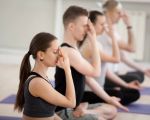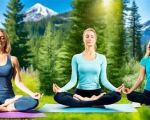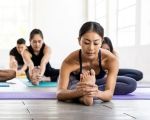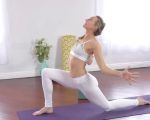- 1 - Tips for Mastering Challenging Yoga Poses - Overview and Importance
- 2 - Understanding Your Body Limitations and Preparation
- 3 - Progressive Step-by-Step Approach to Complex Poses
- 4 - Mental Focus and Breath Control Techniques
- 5 - Learning from Experience: Case Studies and Real Stories
- 6 - How Free Yoga Links Supports Your Yoga Journey
1. Tips for Mastering Challenging Yoga Poses - Overview and Importance
Mastering challenging yoga poses is more than just a physical goal—it’s a journey of patience, discipline, and self-awareness. Many practitioners encounter obstacles when attempting advanced postures, which can discourage progress if not approached correctly. This article dives deep into practical, actionable tips for mastering challenging yoga poses, combining physical preparation with mental strategies. Whether you’re a seasoned yogi or an enthusiastic beginner aiming to improve, understanding the complexities of these poses can transform your practice.
Emphasizing the importance of balance, flexibility, and strength, we’ll explore how gradual progress paired with mindful techniques can unlock your potential. This guide is designed not only to inform but to inspire confidence as you face the difficulties of advanced yoga poses.
2. Understanding Your Body Limitations and Preparation
One of the most crucial steps in mastering challenging yoga poses is a deep awareness of your body’s current capabilities and limitations. Pushing too hard too fast often leads to injuries or frustration, which hinders long-term growth. Begin by assessing your flexibility, strength, and balance through simpler foundational poses. This process is essential to build a solid base.
For example, before attempting arm balances like Bakasana (Crow Pose), strengthening your wrists, shoulders, and core muscles is vital. Preparing the body through targeted exercises and warm-ups reduces strain and primes you for more complex moves.
Understanding limitations is not about accepting defeat but rather about respecting your body’s signals. Incorporate consistent stretching and strengthening routines, and always listen carefully to avoid overexertion. This mindful approach sets a sustainable path to progress in advanced yoga techniques.
2.1 Preparing the Mind and Body for Flexibility
Flexibility often seems like the biggest barrier in challenging poses, yet it is a quality that improves over time with patience. Incorporate gentle, dynamic stretches and hold poses longer as your comfort grows. Combining flexibility work with muscle strengthening ensures your body supports these new ranges of motion safely.
2.2 Injury Prevention through Proper Alignment
Proper alignment is key to preventing injury and maximizing effectiveness in each pose. Learning how to position your joints and muscles correctly can dramatically improve your balance and reduce the risk of strain. Engage with qualified teachers or reliable online resources to get feedback on your form.
3. Progressive Step-by-Step Approach to Complex Poses
Complex yoga poses rarely happen overnight. Breaking them down into manageable steps makes the process less intimidating and more achievable. For instance, take King Pigeon Pose—an intense backbend and hip opener. Start by working on basic hip stretches like Low Lunge, progress to deeper variations, and then gradually add backbend elements.
Utilize props such as blocks, straps, or cushions to support your body as you build strength and flexibility. These aids allow you to hold challenging positions safely while gradually increasing your capacity. A progressive approach nurtures confidence and reinforces proper technique.
3.1 Building Strength Through Incremental Challenges
Focus on strengthening specific muscle groups that directly contribute to the pose. If your goal is arm balances, integrate exercises like plank variations and core work into your routine. Incrementally increasing difficulty ensures your muscles adapt without overwhelming them.
3.2 Consistent Practice and Patience
Consistency is the cornerstone of progress. Practicing challenging poses even briefly on a daily basis keeps your muscles engaged and your mind focused. Patience prevents the frustration that often comes with setbacks, reminding you that mastery is a marathon, not a sprint.
4. Mental Focus and Breath Control Techniques
Yoga is as much a mental practice as it is physical. Developing concentration and breath control can profoundly affect your ability to hold and move into challenging poses. Controlled breathing calms the nervous system and increases oxygen flow, which helps sustain your effort during demanding postures.
Techniques such as Ujjayi breathing or simple deep diaphragmatic breathing can be incorporated into your practice. These breathing methods not only improve endurance but also cultivate mindfulness, reducing the mental chatter that distracts from your focus.
4.1 Visualization for Pose Success
Visualization is a powerful tool to prepare mentally for challenging poses. Imagine yourself moving smoothly into the posture, feeling stable and balanced. This mental rehearsal builds neural pathways that support physical execution.
4.2 Overcoming Fear and Building Confidence
Many challenging yoga poses provoke fear of falling or injury. By pairing breath control with gradual exposure, you train your mind to stay calm and confident. This mental resilience often translates into more fluid and successful attempts at advanced poses.
5. Learning from Experience: Case Studies and Real Stories
Real-life experiences provide relatable insights into mastering challenging yoga poses. Take the story of Anna, a yoga practitioner who struggled with Handstand for over a year. Instead of rushing, she focused on wrist conditioning and core strengthening, combined with breathing exercises to calm performance anxiety. After consistent practice and adjustments guided by her instructor, she achieved a stable handstand. This journey emphasizes the blend of physical and mental preparation.
Another example is Michael, who used online resources extensively before joining a local yoga community. His gradual progress through guided videos and peer feedback helped him conquer difficult backbends like Wheel Pose. Stories like these underscore the importance of persistence, professional guidance, and community support.
5.1 Applying Lessons from Experienced Yogis
Engage with experienced practitioners to learn their strategies. Their insights on overcoming plateaus and managing injuries add valuable dimensions to your own practice.
5.2 Integrating Feedback and Adapting Your Approach
Accept constructive feedback and be flexible in adapting your routine. Sometimes a slight adjustment in technique or timing can unlock breakthroughs in your pose mastery.
6. How Free Yoga Links Supports Your Yoga Journey
Finding the right tools, products, and services to support your yoga practice can be overwhelming. Free Yoga Links offers carefully curated resources tailored for practitioners aiming to master challenging yoga poses. Whether you seek specialized props, trusted online courses, or community groups, this platform connects you to options that fit your needs.
Utilizing these resources can enhance your practice quality and safety, providing a seamless path toward your yoga goals. Free Yoga Links is dedicated to empowering yogis with everything necessary to grow confidently and sustainably.
By integrating expert advice with well-chosen external support, you set yourself up for success on your journey to mastering advanced yoga postures.








